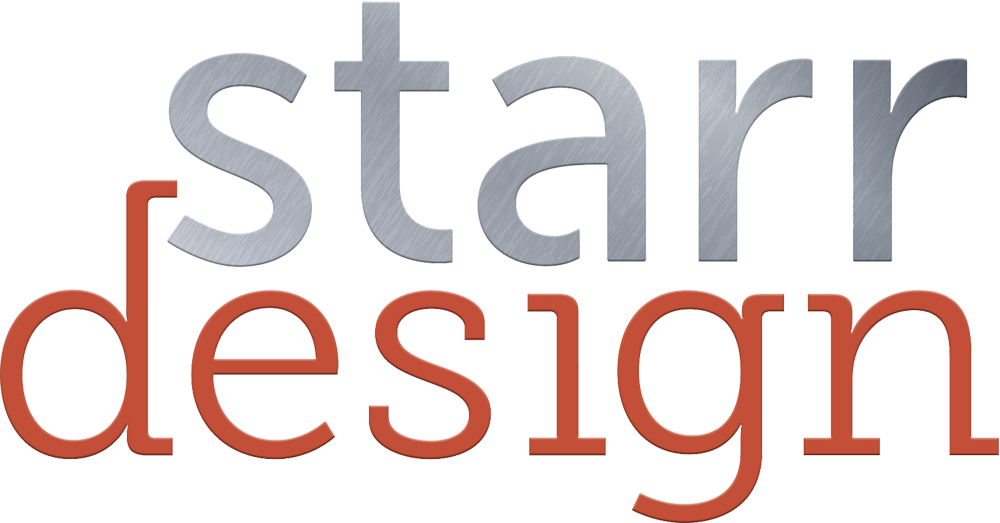Where Shall We Meet?
Restaurant Development + Design publisher Maureen Slocum addresses the heart and soul behind designing for restaurants, alluding to Steve's appearance at the Foodservice Equipment & Deisgn Global Thought Leadership Summit.
Read the full RD+D article here.
Editor's Letter: Knowing Me, Knowing You
It was a unique event that brought readers of this publication together with readers from our sister publication, Foodservice Equipment & Supplies, for two days of TED Talks-style presentations, networking and conversation.
The original content of this post was written by Rebecca Kilbreath for Restaurant Development + Design. Read the full article here.
Designing for a Decreasing Footprint - WEBCAST
Steve joined other industry professionals to talk about maximizing space in minimalist settings for a Restaurant Development + Design webcast. Read more about the panel and watch the recorded webcast here.
Firebirds Energizes with a New Design
The old-school steakhouse has its place. Plenty of occasions call for a more formal experience, something that features the old-school sophistication of low lighting, rich woods and white tablecloths.
Elevated still has its place in an increasingly informal world, as do lively, energetic experiences.
Restaurateurs continue to roll out new prototype designs to provide guests with a more exciting environment. Among them is Charlotte, N.C.-based Firebirds Wood Fired Grill. In November 2017, this 45-plus-unit polished-casual chain rolled out the first location with a new design in Jacksonville, Fla.
The original content of this post was featured on Foodservice equipment & supplies and written by Toby Weber, Contributing Editor. Read the full article here.
How a Multi-Sensory Retail Experience Can Boost Brand Awareness and Sales
While there are many ways to create a multi-sensory experience, Steve Starr of the architecture and design firm Starr Design notes that sound, along with smell and touch, are particularly important for retail stores.
The original content of this post is found on Emagispace. Read the full article here.
1 problem, 3 solutions: Which Restaurant Technology is Worth the Investment?
Technology can be used in your restaurant to impact the customer experience, communicate the concept's brand messaging and increase an operation's efficiency. However, acquiring technology just for the sake of having it is a waste of money.
It’s important to find the right ways to use digital alternatives. Always ask yourself: Is this truly what my customer wants?
I have found that before you use technology in your restaurant, you need to ask yourself three key questions:
- Can I ensure that it will always work?
- Is it truly an effective representative of my brand?
- How will it affect the customer experience?
Digital assets should be used to meet or exceed customer expectations. Otherwise they can be anything from unnecessary to detrimental to your brand. The three biggest returns on investment when it comes to technology are digital menu boards, POS systems and data collection.
- Digital Menu Boards. Restaurants are incorporating digital signage and menu boards into their spaces. These can be useful if you change offerings frequently, either over multiple dayparts or with the seasons. However, the basics of good menu board design still apply when switching to high-tech alternatives. Just because it's new technology doesn't mean you can abandon the tried-and-true principles of legibility and perception. You need to ensure you can hold a person's attention long enough for them to easily scan the menu and cull it down to two or three options.
Digital menu boards can be a great tool in your space if they enable you to convey information and make the transaction process more efficient. However, the diner may struggle to understand the offerings if slides are changing or images are scrolling past. Don't let the innovation of digital menu boards become a distraction. Technology should improve the customer experience and not slow down your operation - POS Systems. Interactive POS screens should provide your employees with important information and improve order accuracy. Technology allows you to master ordering times and throughput. Tickets stay in the queue until they are completed, and the system can change the order status based on target delivery times. Many concepts have this feature, but they aren't using it to its full potential. For example, if an order enters the red zone, doing something about it will resonate with your guest. Set it up so that the POS system will send a notification sent to the manager who can then personally apologize for the wait and appropriately compensate the customer. This is using the technology to truly make a difference in the guest experience.
- Data Collection and Relevant Messaging. Finally, technology provides a huge opportunity for restaurateurs to track purchasing habits of guests in order to improve return visits and increase brand loyalty. You can use loyalty programs, online ordering or mobile app profiles to gather useful and pertinent information. This allows you to provide relevant messages to customers regarding products that are of actual interest to them. For example, if someone is consistently ordering a specific meal, let them know when you release a limited-time-only dish with a similar flavor profile. In this way, you can use technology to engage with existing customers on a whole new level.
Overall, you need to ensure your technology and brand messaging is relevant to customers. If used efficiently, it can improve brand value. Only then can you truly make it worth the investment.
Featured in Restaurant Development + Design.
1 Problem, 3 Solutions: What Should be Considered When Purchasing Kitchen Equipment?
Equipment is such a critical component of any restaurant, and operators need to weigh all sides before making a decision.
If you have an equipment vendor, my number one recommendation is to make them show you every specific piece they have and communicate the differences between the good, better and best options.
- When to consider buying new vs. used. We can’t talk about equipment without discussing previously-owned items. While some used pieces are appropriate for purchase, there are a few best practices operators should follow. Overall, incorporating secondhand appliances can be useful but consider the following guidelines:
- Never purchase used refrigeration or complex electronics. It is incredibly risky and can often be a big waste of money because of wear and tear. It’s better to purchase these items new with a strong warranty.
- When looking at factory refurbished or recalibrated basic gas-fired equipment, used items may be an option. However, make sure you undergo a due diligence process when testing and/or reviewing each piece of equipment.
- Used stainless steel prep tables or wire racks will have significant longevity if they were well maintained. These items hold up better than most and can withstand the test of time. This makes them a good option for purchase if buying from a former owner or restaurant.
- Understand your menu heroes. Know what you need for what you offer and then invest in high-quality, dependable pieces that are used to produce your core menu items. For example, if you’re a burger joint, you may not need the best oven, but you will need a great griddle or charbroiler. An advanced bun toaster may also be a worthy investment. If you’re serving fries, spend your money on high-quality filtering fryers and the best fry holding cabinet available. Those are your menu heroes and the quality of your equipment should reflect that. You’ve got to look at your good, better and best appliance options and determine what’s most appropriate for each item. It doesn’t make sense to invest in the best across the board. Additionally, advanced cooking technology may be more expensive, but it will have a direct relationship to food product quality and consistency without relying on specialty labor.
- Refrigeration systems. Owners should invest more in any refrigeration system that is under or near the hood. Keep in mind that your grill, charbroilers, ranges and ovens put off so much heat that a high-quality refrigeration system is required to combat it. You can shop for value with standard reach-in refrigerators but not on the cook line. For refrigerated equipment stands, work tops or prep units that are immediately adjacent to cooking equipment, we recommend using the best possible product because that is your workhorse. Whether you spend the money on the better or best depends on how much heat your cooking equipment is giving off. Go from there to determine the right system for your restaurant.
Featured in Restaurant Development + Design.
Tales for an Accelerated Culture
Editor in Chief Rebecca Kilbreath talks about the national recognition that rd+d earned by partnering with starrdesign and the value that comes from reader-driven content.
Read full restaurant development + design article here.
Make Your Restaurant's Design Pop with Custom Features
Sarah Pike, Art Director
Custom features within any restaurant space can become a brand trademark used to spark interest, entice guests and create brand recognition. Restaurant operators rely on their designers, and the partnerships they bring to the table, to create a successful finished product. Therefore, it’s important for operators to be mindful of who they choose for an architect and designer and the type of third-party relationships they bring to the table.
So, what are these custom features? A curated glass centerpiece in a dining room, a custom-designed vintage sign, or an eye-catching wall installation are all elements designed by a team of architects and brand engineers—working with fabricators and other craftsmen to make each element come alive. The relationships between the architects, brand engineers, fabricators, fine artists, woodworkers, and other craftsmen, become imperative to the project.
If the space includes commissioned artwork that is brand related, it takes a keen eye from the designer to find artists that produce work in line with the interior design and brand attributes. Once an artist is selected and contracted, the designer provides guidance throughout the process to ensure the art stays aligned with the branded environment.
Custom fixtures for restaurant or retail spaces allow the final product to feel cohesive. Partnering with talented fixture engineers and shepherding them through the intent takes dedication from all parties. It’s important to work closely with the fabrication team to make sure the customer experience feels right for the brand and the fixture displays merchandise in the best light.
In order to do this successfully, designers and brand engineers must communicate design intent to the fabricators. This is where unique challenges often arise. It’s important for designers to use the right tools and technologies to make sure their ideas come to life in the way they are intended. Drawings have to be on-point so fabricators and other craftsmen have something easy to follow and create.
It is truly an iterative process in that sometimes the drawings are brought to them and communicated in a way that has a direct outcome on the final product. Sometimes, smaller samples are created that reflect the right texture, finish and scale. Designers have to spend a lot of time working through the details. If the third-party relationships aren’t strong, the product can turn out less than ideal.
Therefore, the best course of action is to over communicate. This pertains to every phase of the project—from the initial drawing to the deadlines, file types and type of software used to create the right element. For instance, multiple vendors may need to be connected on the creation of a lighting fixture to ensure the piece not only delivers for the brand, but also is executable. And so that relationship building becomes a process of connecting the right people at the right time with a project. Putting in the time is key.
The overall benefit to the entire project is that we, as designers, get to deliver a custom-branded piece that is unique to the concept. This is especially important in industries that are oversaturated. We are able to provide our clients with pieces that are on-brand and create a unique guest experience. Designing these custom pieces with the talented makers of the world allows brands to step outside of tired trends.
In addition to over communication, it is important that designers maintain expectations throughout the project, and this requires a strong collaboration between all parties. Designers don’t always know the best way to put something together and they have to rely on their craftsmen to bring the vision to life. Once you find people that you connect with and who can get those pieces made, they become valuable parts of the team. Don’t lose them. By building the right relationships, and in the right way, a bright idea can turn into a big reality. It takes time, effort and a commitment to the project; but the final outcome is always worth it.
Featured in FSR Magazine.
1 problem, 3 solutions: remodels and lease requirements
How do I coordinate remodels or refreshes with lease requirements?
We’re often asked about remodeling strategies and when is the “right” time to refresh a restaurant. Most leases have defined requirements around refreshes and renovations. So, the best time may often depend on your specific lease requirements and terms. Many industry insiders have seen and have noted the accelerated pace of change in recent years. The lifespan of a design concept has been shortened from 10 years down to only five to seven. This is due to the rapid shifts in customer behavior and expectations that are requiring operators to update sooner rather than later. Therefore, be deliberate with your scheduled repair and maintenance. Here are three recommendations for restaurant operators looking to go through a remodel or renovation.
Know your lease terms and understand your design lifecycle. Whether you need to make changes every five, seven or 10 years, you should be looking at your facilities as made up of two distinct parts: items that are infrastructure and items that create the look and feel (fixtures, furniture and finishes). This is important because if you have a 10-year lease with a five-year option (typical lease terms), and you’re required to refresh every 5 years, then you should design your infrastructure items to last 15 years. Meanwhile, plan to update your look and feel items every five years. This can be a very cost-effective means of keeping current with consumer trends without having to perform a major remodel too often.
Schedule and budget accordingly. In order to do this, operators need to have two different budget schedules: one for fixtures, furniture and finishes and another for infrastructural changes that may require longer periods of down time. Be deliberate with your repair and maintenance plan and go into it with the understanding that the fixtures, furniture and finishes may have a lifespan of five-to-seven years. These items need to look great but don’t need to last forever. The infrastructure items, on the other hand, should be designed with greater longevity in mind.
Re-evaluate your real estate. Don’t be afraid to move. If you’re in a space for 15 years, the context of why you chose that location could very well have changed. In a lot of cases, it’s cheaper in the long run to go to the next corner or to a more active site within your given trade area and close the old location. The beauty of this strategy is the limited down time, and you will often receive greater incentives to build as a new tenant. If you didn’t design your infrastructure items to last longer than 15 to 20 years, you may end up spending less capital to build a new restaurant than you would to renovate your existing space. Or, in some cases, you might be better off doing a scrape and rebuild on the same site. Therefore, re-evaluate your real estate. After 15 years, you have to determine if you’ve become a cultural icon in your neighborhood or if you’ve just become outdated. So: know when to walk away.
Labor Pains
With starting wages rising to between $9 and $12 per hour in many states, and as much as $15 per hour in cities such as San Francisco and Seattle, the cost to produce your menu keeps getting more expensive. Twenty-nine states have set higher minimum wages than the federal minimum of $7.85 per hour, and many this year started indexing those to the cost of living.
Meanwhile, as the economy continues to improve, other industries are hiring potential candidates out from under you, making it increasingly difficult to staff your kitchens with qualified employees.
The original content of this post was featured on Foodservice Equipment Reports and written by Michael Sherer. Read his full article and Steve's thoughts on lowering labor costs here.
5 reasons why mall shopping is good for your health
Steve weighs in on one of the five ways shopping in a physical retail environment can help lead to a healthier lifestyle for a post in the Daily Herald.









